

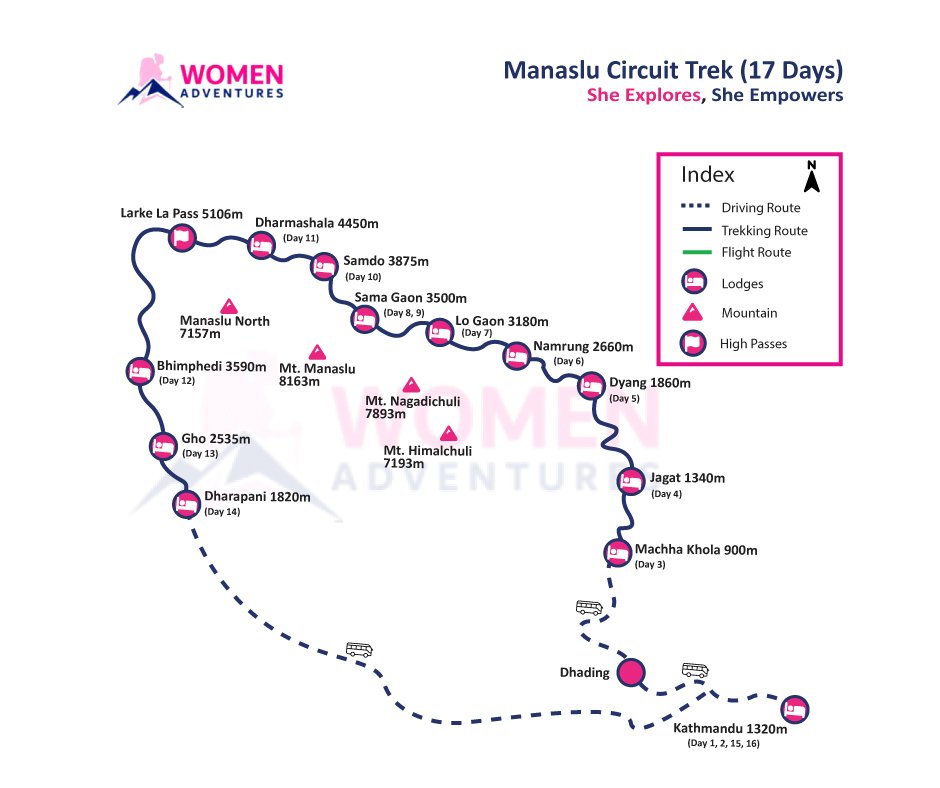
Price(per-person)
Region
ManasluDuration
17 daysAccomodation
Tea-House (Lodges)Altitude
5106 mMeals
Breakfast/Lunch/DinnerDifficulty
ModerateActivity
TrekkingSeason
March, April, May, September, October, NovemberStart End Point
Kathmandu - KathmanduGroup Size
2-30Total Distance
163 km/101 milesTransportation
Private vehicle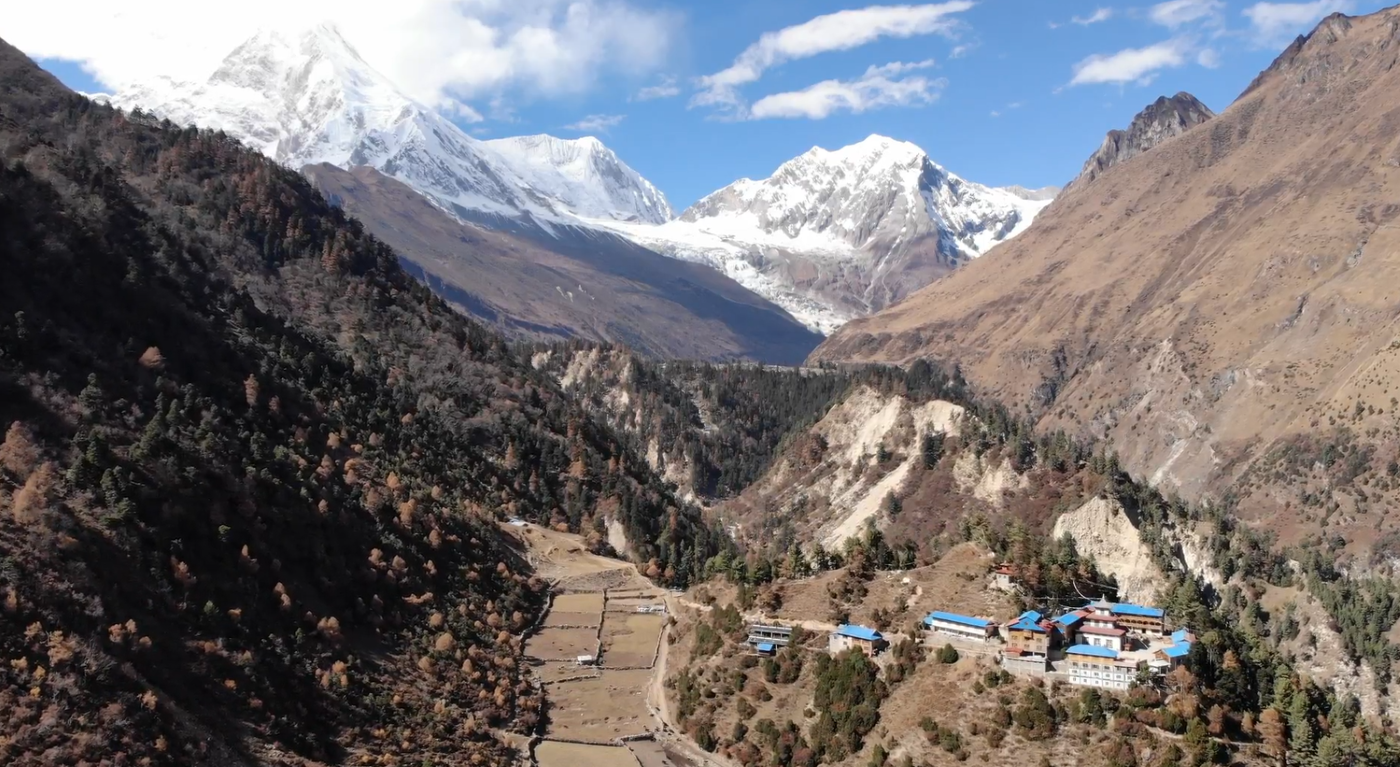
Manaslu Circuit Trekking or around Manaslu takes you on both scenic sides of Mt. Manaslu. The world’s 8th highest Mt. Manaslu 8,163 m/26,781 feet, was first summited by the Japanese Expedition in 1956. The Manaslu Circuit treks start from the lower warm farm villages of the Gorkha district to the cooler alpine hills. Trekkers will reach the high picturesque Manaslu Valley enclosed by towering snow peaks of the Manaslu massif.
Trekkers will experience dramatic changes in climate, vegetation, and landscapes to local cultures. You can make Manaslu Circuit Trekking an exclusive adventure of a two-week time frame. This trek can be a perfect adventure for women of all ages whether you are travelling solo or with your fellow female explorers. For solo women trekkers, choosing a female only trekking guide agency ensures added safety, cultural insight, and empowerment. We are a female-owned trekking company providing reliable, licensed women trekking guide in Nepal and female porter support.
The trail leads you around the harmony of the impressive cultures of the native Manaslu villagers. The women of the Manaslu region, belonging to native tribes like the Gurungs and Tamangs, lead resilient and resourceful lives, engaging in agriculture, animal husbandry, and tourism. They significantly contribute to community development and serve as powerful symbols of women’s empowerment by inspiring others through their dedication and hard work. A female trekking guide agency like Women Adventures supports this mission by promoting the role of local women in tourism.
You will walk beneath the massive Manaslu Himal range of peaks with views of the massif Ganesh Himal towards the east. The high and upper regions of Manaslu Circuit remained a forbidden country for the outside world around the late 1950s which then opened for foreign visitors in 1992. It was one of the restricted areas in Nepal. In the early days, it existed as the Trans Himalayan Salt Trade Route, due to its close borders with Tibet-China, where a caravan of yaks and mules laden with goods from both sides of the borders passed through. The trade still exists but in a small way than in the early days. This is why, it was known as Larke Bazaar, which is en route to Larke Phedi, Dharmasala. Dharmasala is the base of Larke-La Pass, where our trek leads to the end of Manaslu Valley rim.
The adventure continues following the Budhi-Gandaki River to its near glacial source at Upper Manaslu Valley. The walk proceeds to explore the lovely villages of Jagat, Dyang, and Namrung to Lo-Gaon, steeped with immense cultures of Buddhism religion. From Lo-Gaon, a lovely village with an impressive monastery located beneath the towering North Face of Mt. Manaslu. The high and scenic trail follows the route to Sama-Gaon, the major village of the Upper Manaslu Valley which is en route to Manaslu Base Camp and towards Larke-La Pass, as well as towards Nepal and Tibet borders.
Spend extra days in the large village of Sama Gaon, walking among towering mountain ranges to acclimatize and explore scenic viewpoints. Explore the traditional village of Sama-Gaon enriched with cultures amidst beautiful scenery. This is a key stop on the manaslu circuit trek itinerary. Trekkers will leave the Sama-Gaon, towards the end of Manaslu Valley on a windswept terrain, and past Samdo village to reach Dharmasala.
An early morning, a steep and long climb leads you to the top of Larke-La Pass. The highest point of the adventure rewards a glorious vista of surrounding snow-capped peaks which includes the grand panorama of Manaslu, Himlung, and Annapurna Himalayan range, as far as Ganesh Himal. After achieving our goals and main highlights of the adventures, the return journey is a long downhill passing through a lovely forest and eventually reaching at the other end of Larke Pass around Manang areas. A pleasant walk amidst an enchanting forest leads to Dharapani village, where our trek concludes. Enjoy the last overnight around the mountain village. From Dharapani, an exciting drive brings you to Kathmandu after a great and wonderful experience and adventure on Manaslu Circuit Trekking.
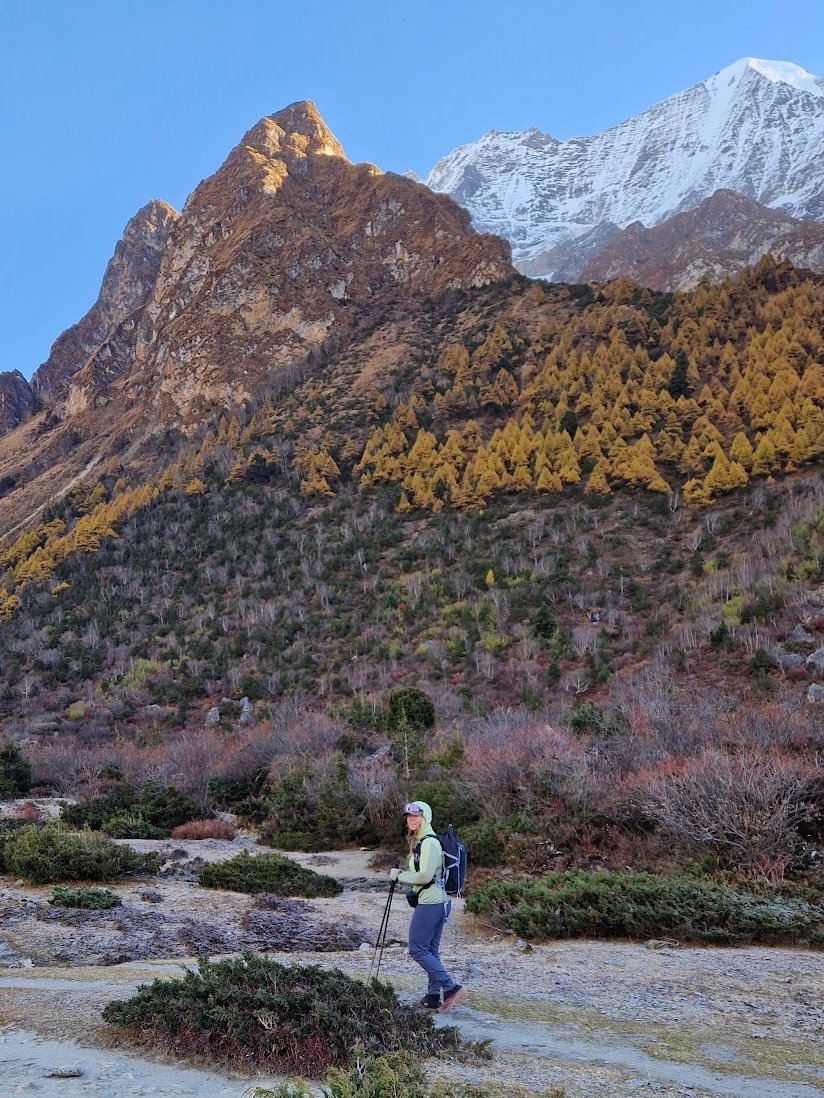
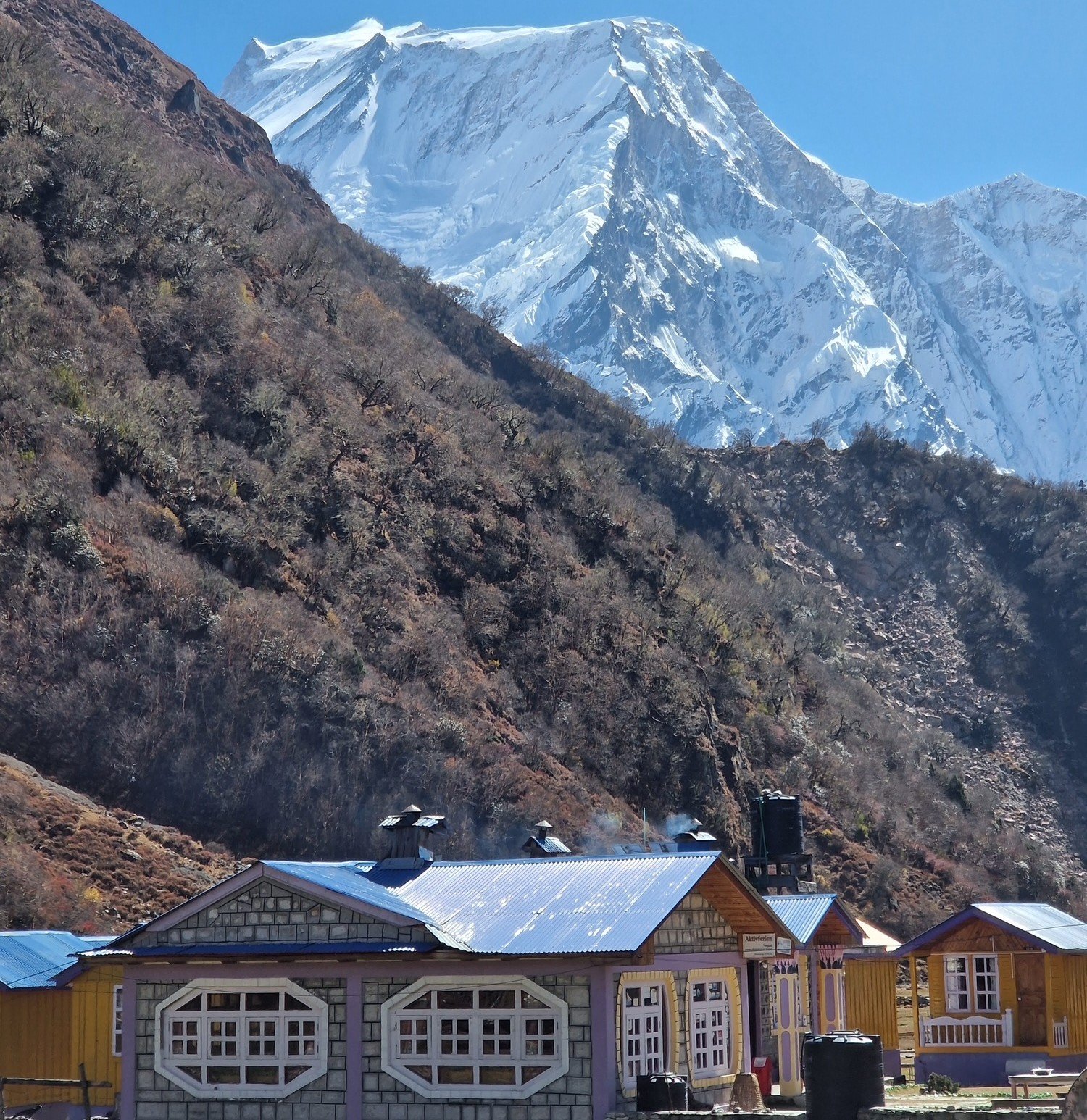
From Dharapani Village, the food and lodge accommodations around higher villages is available at designated overnight stops. The lodge accommodation is nice, with a comprehensive food menu to enjoy in big villages.
In Nepal, the most favorite and popular meal is Nepali Dal Bhat, boiled or steamed rice served with a mild curry of seasonal vegetables, including Dal, a lentil bean soup with homemade pickles, and hot sauce as options. The food menu lists from breakfast, lunch, and dinner to snack items. Breakfast from oats porridge, and cereals to cornflakes with toast/ chapattis, and pancakes includes a choice of egg variation. Lunch and dinner options include a variety of main courses from Continental, Chinese, Indian, Nepali, and Tibetan cuisines, along with a selection of soups.
The lodge accommodation and food are best in the villages of Jagat, Namrung, Lo, and Sama Gaon, as well as in Bhimthang and Dharapani on reaching Manang district. But in places like Dharmasala and Gho the lodge facilities are simple and basic which provides common bathrooms and toilets.
The food menu in these places offers a limited variety of options. Trekkers can expect that most rooms in high-altitude areas come with common bathrooms and toilets. The plumbing systems with running water freeze in the morning, evening, and nighttime because of harsh cold climate conditions. Due to the freezing temperatures from Jagat and Dyang villages onward, hot showers are available at an additional cost.
All lodges have electricity to light the large dining room powered by local hydro or solar power. For charging electronic items, you have to pay an extra cost per hour and for each gadget. Internet and Wi-Fi are available, but it is slow and disturbing in some places due to weather conditions.
In a large group with more than 4 people, it is best to order a set meal for all. It saves time and fuels energy, which is important around remote areas of the Himalayas. Following the norms and rules as Responsible Trekkers is a good practice for Eco-Tourism and involves properly managing garbage and litter throughout the trek.
Nepal is a country of great diversity of landscape and people with their age-old religions, cultures, and heritage. The mid-hill people around the Gorkha district of Mid-West Nepal are Magar and Gurung hill tribes. The Gurung and Magar with some Hindu Brahmin and Chettries are the inhabitants of the southern areas of the Manaslu and Gorkha district. From Jagat village, we entered the high Manaslu areas as far as on top of Larke-La Pass including the Manang district after crossing the pass of Larke-La.
The highland villagers of Manaslu and Manang are of strong Tibetan origin known as Bhotias, and Mustang people. They follow Buddhist religion similar to their Tibetan predecessors. Trekkers will notice Buddhist monuments of prayer walls and spinning wheels with impressive monasteries of great religious and cultural interest. The Highlander people of the Upper Gorkha region, from Jagat onwards, refers to Manaslu as ‘Kutang’ in the Tibetan-origin language.
Kutang means a flourishing valley for farming high-altitude crops of barley, wheat, buckwheat and raising livestock of yaks, sheep, and goats. Manaslu is named from ancient Sanskrit, and means the mind or soul of a God, like the Manasarover holy lake in Tibet.
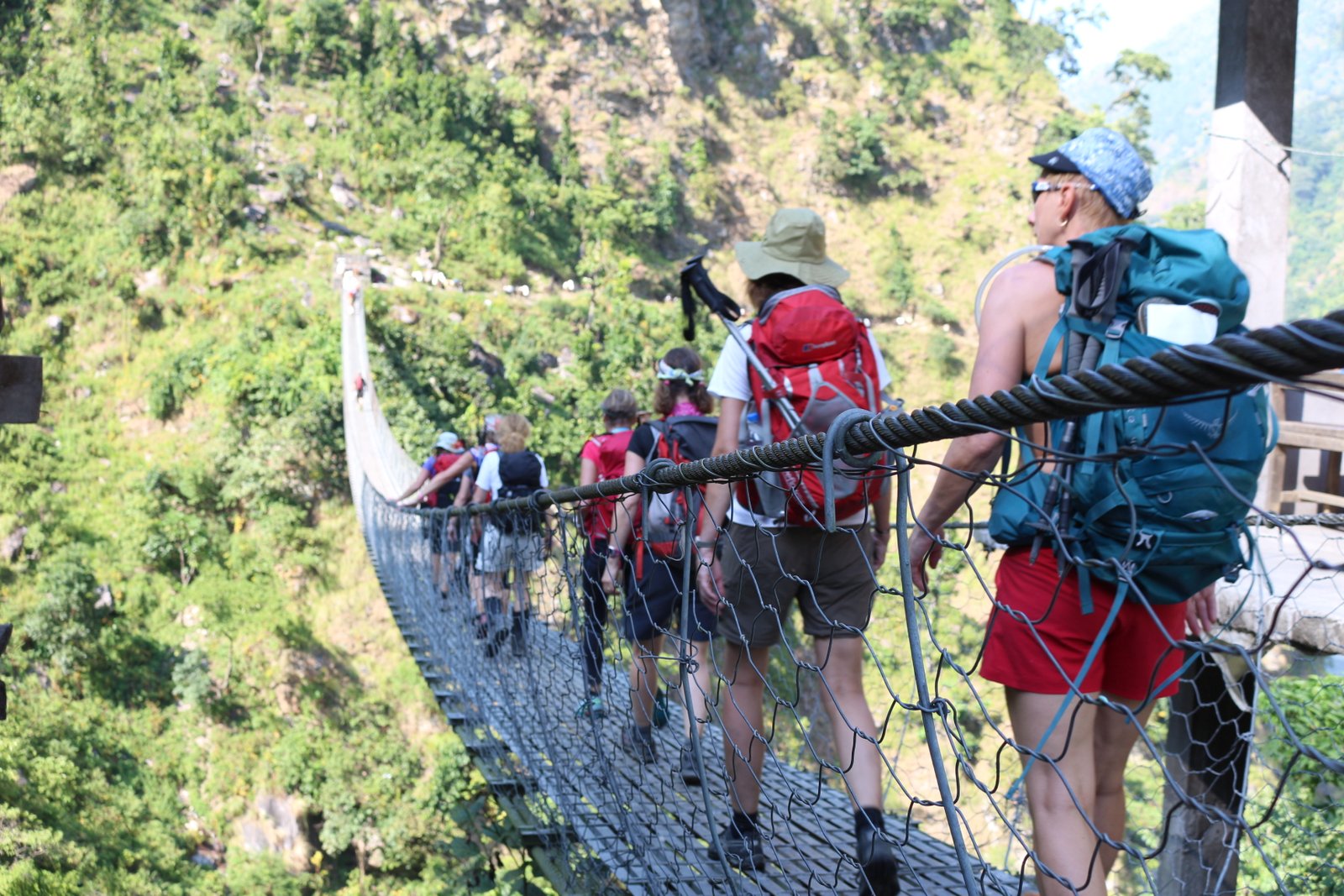
Trekkers joining for Manaslu Circuit Trekking or other adventures around Nepal Himalayas must be aware beforehand. Nepal is a country with the world’s highest mountain range from foothills to the world's tallest peaks with rugged mountainous landscapes and terrains. The walk leads to many ups and downhill with few gradual sections to enjoy. The only flatland is the low sub-tropical Terai belt around southern Nepal.
On Manaslu Circuit, the trek starts with a gradual, slow climb, followed by some steep ups for some hours, with a few short downhill sections. The trek follows along the glacial Buddhi-Gandaki River, to cross several bridges as well as an exciting Cantilever bridge, built and attached on the sheer rocky cliff wall, close to the river.
From Dharmasala or Larke Phedi, the trek leads to a steep climb for a few hours to reach on top of Larke-La Pass. The rest of the journey is downhill to the Manang area unto Dharapani village, the finishing point of treks.
Oops! Fixed departures for this package are currently unavailable. Please check back later or contact us for alternatives.
Price Starts From $ 1450
General
Daypack
Upper Body - Head / Ears / Eyes
Hand
Body
Lower Body – Legs
Feet
Medicines and First Aid Kits
(Our guide will carry first aid kit bag during the trek. We still recommend you to bring your personal first aid kit as you feel it necessary).
Antibiotics.
Miscellaneous
Women's Health Essentials
The items mentioned on the list are recommended by us but not compulsory so you can pack your stuff according to your necessity. Women Adventures lends you down jackets, fleece liner and sleeping bags as a part of their service but if you have your own then you can bring it according to your preference.